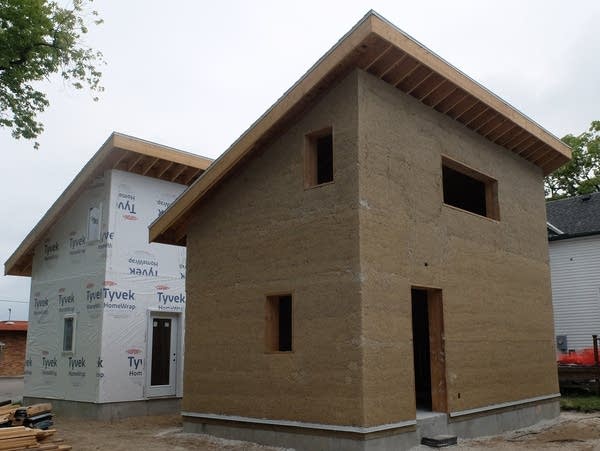Fargo house will research hemp construction material

A hempcrete home under construction in in Fargo on July 26 is the focus of research comparing the hemp building material with a traditional wood frame house.
Dan Gunderson | MPR News
Go Deeper.
Create an account or log in to save stories.
Like this?
Thanks for liking this story! We have added it to a list of your favorite stories.


